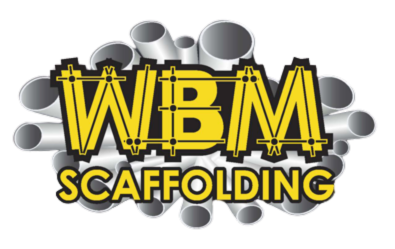Working at height always comes with risk, which is why scaffolding safety is a major part of construction law in the UK. Whether you are a builder, homeowner, site manager or scaffolder, you have legal responsibilities to ensure scaffolding is used and maintained safely.
UK scaffolding laws is simple. I will cover what the law says, who is responsible, what checks are needed, and how to stay compliant. This structure is designed to be easy to follow and value-adding to anyone involved in scaffolding work.
Why Scaffolding Safety Matters
Scaffolding makes it possible to work at height safely, but it also creates hazards if not managed properly. Unsafe scaffolding can lead to:
- Falls from height
- Falling tools or materials
- Structural collapse
According to the HSE (Health and Safety Executive), falls from height remain one of the biggest causes of death and injury in the construction sector. That’s why there are strict laws and regulations around scaffolding safety in the UK.
The Main Laws Covering Scaffolding in the UK
Several regulations apply to scaffolding. The most important ones include:
1. The Work at Height Regulations 2005
These rules cover all work carried out at height. They state that:
- Work at height must be properly planned
- The right equipment must be used
- Workers must be trained and competent
- Equipment (including scaffolding) must be inspected regularly
2. The Health and Safety at Work etc. Act 1974
This is the general framework for all workplace safety in the UK. It places duties on employers to protect their workers and anyone affected by their work.
3. The Construction (Design and Management) Regulations 2015 (CDM)
These apply to all construction projects and define roles and responsibilities of clients, contractors and designers, including scaffolders. CDM also requires planning for safety throughout the project lifecycle.
Who Is Responsible for Scaffolding Safety?
There are several people responsible for making sure scaffolding is safe:
- Scaffolding company: Must design, erect, and inspect scaffolding according to safety rules.
- Site manager or principal contractor: Must ensure scaffolding is safe to use.
- Employers: Must provide safe working conditions and ensure only competent people use the scaffolding.
- Workers: Must follow safety rules and report any concerns or damage.
Scaffold Inspections What the Law Says
Scaffolding must be inspected at certain points by a qualified person. According to the law:
- It must be inspected before first use
- It must be inspected after any change (e.g., repositioning or severe weather)
- It must be inspected at least every 7 days while in use
All inspections must be recorded, usually in a scaffold inspection register. The person doing the inspection should have a CISRS card or similar recognised training.
Legal Requirements for Scaffolding Design
In some cases, scaffolding must be designed by a qualified scaffold designer, especially if:
- It is a complex structure
- It is a bespoke build
- It supports heavy loads
A standard scaffold may use a generic design, but any changes or unusual configurations require a specific scaffold design plan.
Public Areas and Scaffolding
If scaffolding is placed on or over a public footpath or road, special permissions are needed:
- A permit from the local authority is required
- Lighting and signage must be added to warn the public
- Extra precautions must be taken to prevent falling objects
Failing to get a licence can lead to fines and legal action.
Penalties for Breaking Scaffolding Safety Laws
Breaking scaffolding safety laws can have serious consequences, including:
- Fines from the HSE or local authority
- Site shutdowns
- Criminal charges in severe cases
In addition to legal penalties, it can also damage reputations and increase insurance costs.
How to Stay Compliant
Here are a few ways to stay compliant with UK scaffolding safety laws:
- Always use trained, competent scaffolders
- Carry out and record inspections
- Keep scaffolding clear of clutter
- Never modify scaffold structures yourself
- Use toe boards, guard rails, and netting
- Plan for weather conditions
If you’re hiring a scaffolding company, check they have public liability insurance and are registered with a recognised body. You can also look at reviews on Checkatrade or their Facebook page.
Why Local Expertise Helps
Working with a local scaffolding company that understands UK laws and regional conditions can make things easier. For example, at WBM Scaffolding, we operate across Kent and provide fully compliant scaffolding systems. Our team handles permits, safety checks, and inspections so you can focus on the job.
If you have a project coming up and want to talk to a reliable local team, contact us here to arrange a site visit.
Summary
UK scaffolding safety laws exist to protect workers, the public, and property. They require careful planning, trained professionals, and regular inspections. Understanding your responsibilities is essential if you’re involved in a project that requires scaffolding.
By following the Work at Height Regulations and other key laws, you can reduce risk, avoid penalties, and ensure your project runs smoothly.
If you’re not sure what rules apply to your site, always ask a professional scaffolding provider. Safety should never be an afterthought—it’s a legal requirement.
